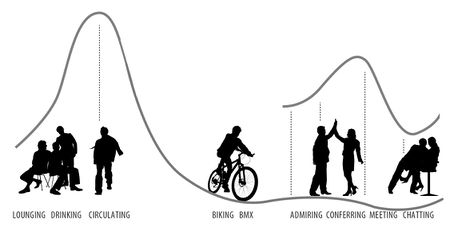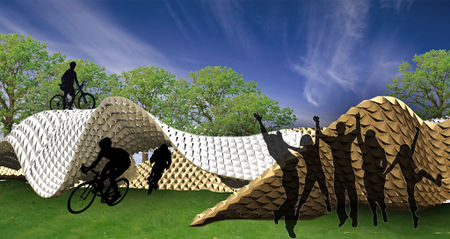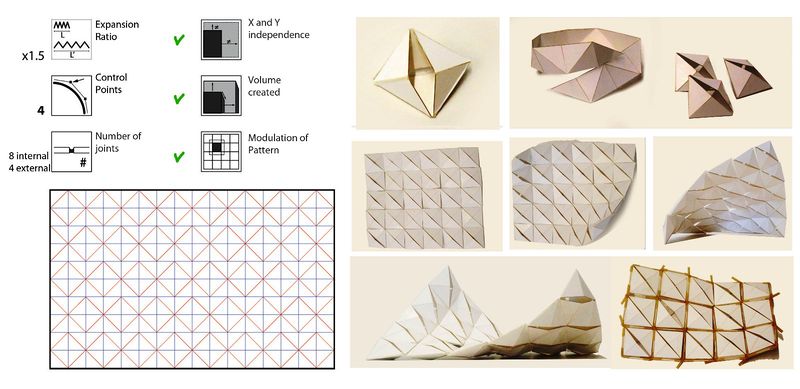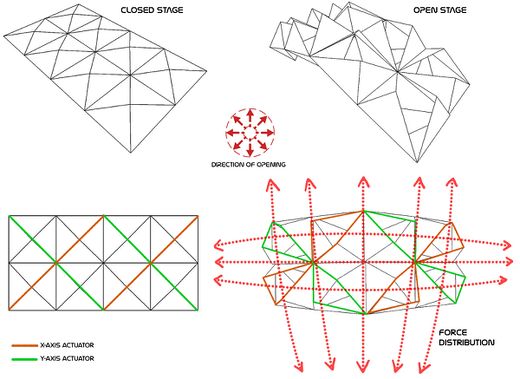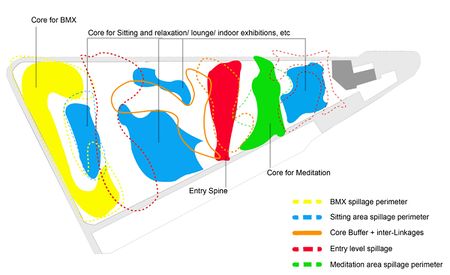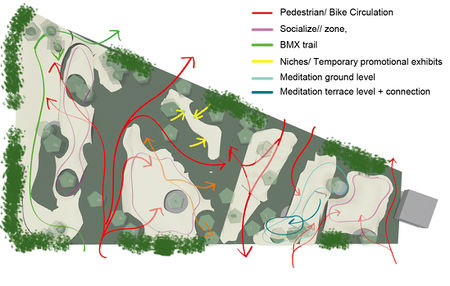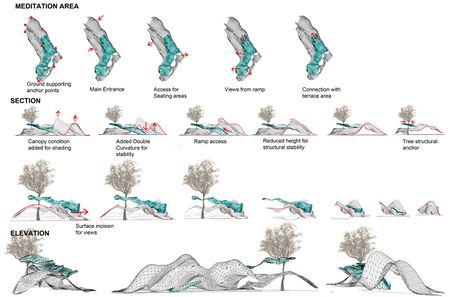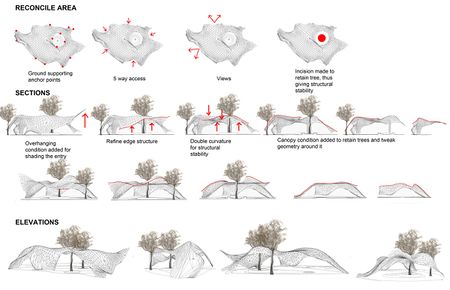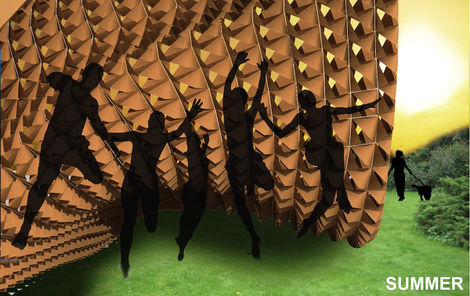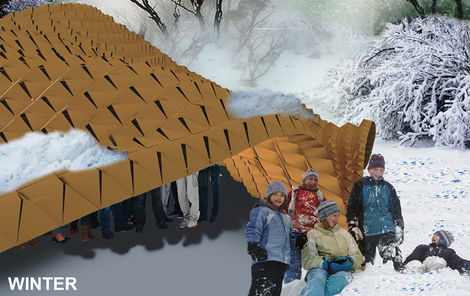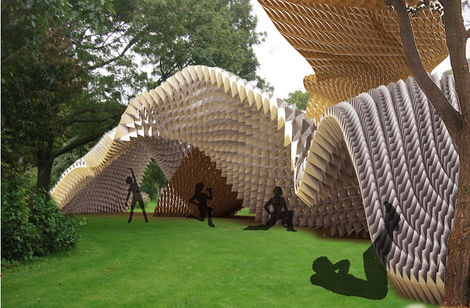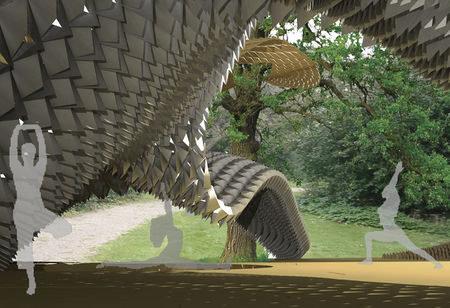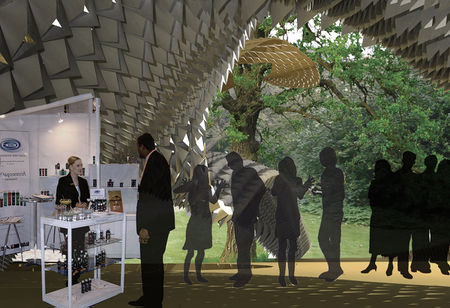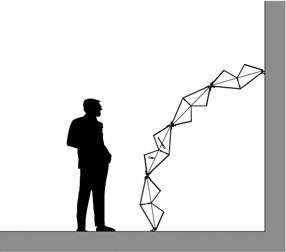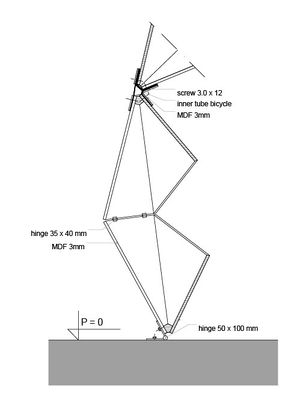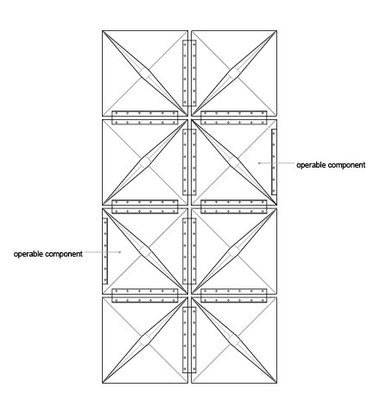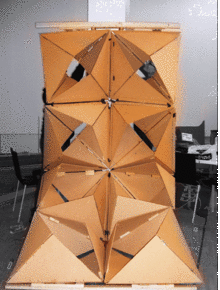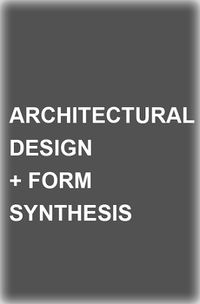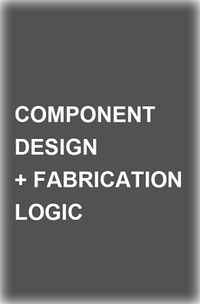project H:Pitch
Indicates Dynamic way of expanding from flat surface into fabricated system
Process
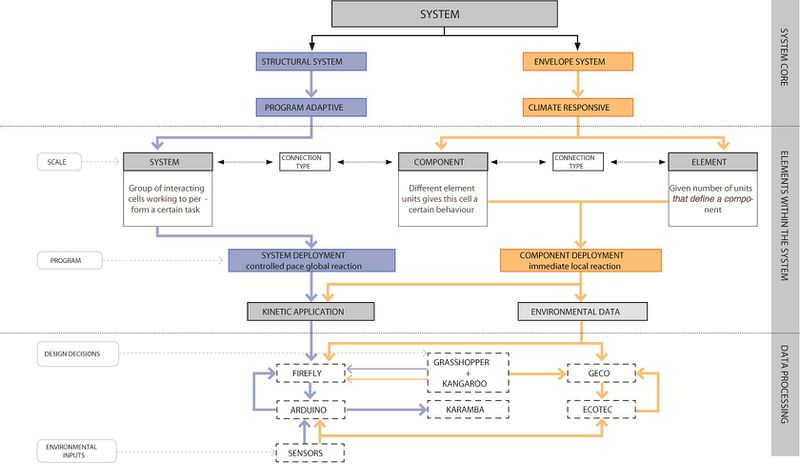 Users would treat this not only as constructed object but also as an integral enhancement of the site. Our concept "Symbiosis" in a way reflects this very phenomenon.
Users would treat this not only as constructed object but also as an integral enhancement of the site. Our concept "Symbiosis" in a way reflects this very phenomenon.
MULTI-COMPONENT SYSTEM RESEARCH
How to create a non-standard structure out of standard components?
MODULAR PATTERNS
After a long phase of research and exploration we came across a component in that we are able to achieve a variety of form and space from single basic geometrical shape (i.e. a triangle). Modular patterns can be deployed to form different volumes while remaining as a surface when retracted.
GEOMETRIC ANALYSIS
Nine different component geometries obtained by the combination of 3 stages in the actuators: open, semi-open and closed.
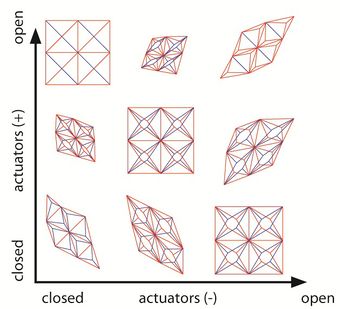
SPATIAL SPILLAGE
The surfology and its spatial types within the park topography afford the triggerings of activities within the programs of the park. These activities are of the temporal meaning that other activities can than be triggerd!

SEASONAL SCENARIOS
MEDITATION AREA
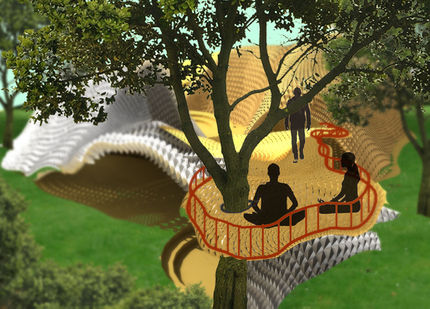 Existing trees been used as anchor points for the terrace structure, facilitating ambience for meditation space
Existing trees been used as anchor points for the terrace structure, facilitating ambience for meditation space
DESIGN CHALLENGE
The component as such depends on the main structural performative system (origami), it is required for this unit to be adjustable and adaptable to its primary system. Therefore, several properties need to be adjusted such as; the overall geometry, movement range and mechanical complexity.
FABRICATION AND ASSEMBLY
 In the assembly process of making 1:1 prototype, parts can be pre-assembled to step 5 for flat packaging using hinges in between. Parts from step 5 and step 6 are the only parts that need to be taken to the site for final assembly. With the 1:1 scale model, this arrangement create difficult to reach spaces and angles for the final assembly especially on verge of reaching step 7 where bike tire connections were required to be bolted. Constructing it on a desk/ studio is a challenge; however, constructing the final assembly on a real site is a different process that needs to be studied with further research.
In the assembly process of making 1:1 prototype, parts can be pre-assembled to step 5 for flat packaging using hinges in between. Parts from step 5 and step 6 are the only parts that need to be taken to the site for final assembly. With the 1:1 scale model, this arrangement create difficult to reach spaces and angles for the final assembly especially on verge of reaching step 7 where bike tire connections were required to be bolted. Constructing it on a desk/ studio is a challenge; however, constructing the final assembly on a real site is a different process that needs to be studied with further research.
EVALUATION
1. Due to the great number of elements that make up a single component which in turn must be multiplied in order to populate a surface, then, fabrication time becomes very consuming.
2. Once this pattern was assembled, one of the most important factors learned was the immense amount of force required to activate it.
3. From this exercise, we can conclude that once the surface becomes kinetic, it must never come back to “0” curvature and it must remain at number greater than zero in order to minimize the amount of force required for actuation and to retain the overall shape of the structure.
4. Materiality wise a better alternative material could be adopted. Both light and strong in nature, which can bear both tension and compression loads simultaneously.
5. Joinery done by using bike tire indigenous solution proved to be quiet effective and strong. That proved out to be a good solution. Joineries that were expected to perform didn't work out that well. Maybe in future production of customized hinges will be a better alternative.6. Other alternate mechanisms could even be explored which are capable of resisting tensile and compressive forces, which didn't work out that well in our case of actuators.
7. The structure exerts a greater force as they are engaged into a kinetic mode. The torque between components increases, and when it comes to shape change. There is a domino effect that begins to elevate one component higher from the next as stress increases.
8. We must note that prior to the assembly process, small modifications must be taken into account due to the lack of material thickness. However, we are not able to simulate gravity, nor material weight.
9. As estimated the costs incurred for the overall manufacturing went to around 90 Euros, i.e. each component costed around 10 Euros. That was an economical approach towards the prototype design considering the material and fixture costs.
FABRICATION TIME
Fabrication time:
4 hrs. (cutting panels)
14 hrs. (hinging elements together) (faster assembly process later due to gained experience)
Total fabrication time: 18 hrs.
Repairing the hinges + wood joinery: 8 hrs (Time consuming and major contributor to evaluation)
Subtotal: 26 hrs
</div>


